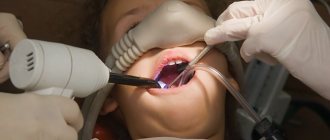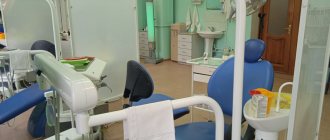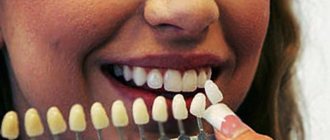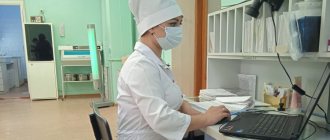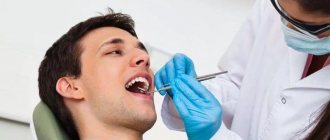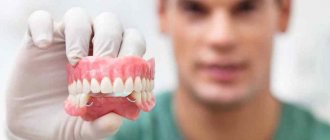Sedation and anesthesia: it is important not to be confused!
Treatment under sedation is often confused with treatment under anesthesia.
However, these are different procedures. Anesthesia is an artificially induced reversible inhibition of the central nervous system, in which the patient is in a completely unconscious state. Anesthesia suppresses reflexes, including pain, so when treating teeth under anesthesia, local anesthesia is no longer required. Anesthesia requires special preparation - a blood test and an ECG, and before the procedure you must not eat for 6 hours and not drink for 4 hours. Sedation is a minimal depression of consciousness in a child, in which he can contact the doctor, following his instructions.
In this case, the child is completely relaxed, calm and does not experience any negative emotions (fear, anxiety, etc.). However, sedation does not suppress pain, so local anesthesia is still necessary. No special preparation is needed for the procedure - before sedation, you should prepare the child a light breakfast, without heavy food.
Children's dental clinic Aza&Buka: treatment under anesthesia or sedation
When parents are looking for where they can treat their child’s teeth under general anesthesia or sedation, they consider all the clinics’ offers. There are many reasons to choose Azabuka pediatric dentistry:
- Honest prices - administrators will not just tell you how much it costs to treat a child’s teeth under anesthesia or sedation, but will also name mandatory and secondary related services.
- All types of dental care - in the clinic you can remove a child’s baby tooth under sedation, cure pulpitis and caries, and put crowns on damaged teeth.
- Experienced doctors - the children's dental center employs highly qualified specialists of various profiles to provide excellent services to young patients.
- Individual approach - all the clinic staff are familiar with the peculiarities of child psychology, which helps to establish contacts even with difficult patients.
- The little patients are in an excellent mood - after treatment without pain and tears, the children leave happy and with healthy teeth.
- Modern equipment - for diagnosis and treatment, health monitoring, drug supply, comfortable service.
Dentistry Aza&Buka - healthy teeth from birth!
How is sedation performed during dental treatment?
The sequence of actions during dental treatment under sedation is as follows: first, the doctor puts the child into a state of sedation, then makes an anesthetic application at the injection site with a special gel.
This is necessary to completely eliminate any discomfort in the baby. The dentist then administers an anesthetic and then begins treatment. Sedation in pediatric dentistry is most often performed using nitrous oxide mixed with oxygen, which is administered through a nasal mask. Oxygen comes in first, then a very small amount of nitrous oxide. This is a sweetish inert gas that begins to act in 2-3 minutes and is completely eliminated from the child’s body within 10 minutes after stopping the supply of the mixture.
Nitrous oxide is completely harmless to the child - to date, not a single case of complications after sedation has been described.
That is why it is so widely used in pediatric dentistry. Nausea or vomiting is very rare, but to prevent these phenomena, the doctor removes the child from sedation gradually, over 5 minutes.
However, sedation or anesthesia does not exclude the need for an adaptation technique. This is a method of working with children in which a friendly, trusting relationship is established between the dentist and the child. The doctor shows the little patient the office, the instruments, the mask and the sedation machine, and explains what it is for. This way the child stops being afraid of the new environment, and the doctor’s actions become clear to him. This reduces the baby's stress and anxiety levels.
Indications for removal of baby teeth
In the absence of pathologies and good dental health, the renewal of the child’s bite begins at approximately the age of 5-7 years. The permanent molars are already ready to replace the baby teeth, so the latter become mobile and often fall out on their own.
The ideal scenario makes everyone happy, but sometimes the removal (extraction) of baby teeth is an objective necessity. Indications are determined by the dentist:
- Loose baby teeth. The strong mobility of the changing tooth bothers the child. Unpleasant sensations occur when talking or eating. There is a danger of gum inflammation.
- Supernumerary tooth. An extra unit interferes with the formation of a correct bite, so after consultation with an orthodontist it is often recommended to be removed.
- Beginning of permanent molar tooth eruption. In this case, the baby tooth becomes a nuisance, which it is advisable to remove as soon as possible.
- Severe tooth decay due to deep caries, pulpitis or periodontitis. The dentist will make every effort to save the baby tooth, but in case of serious damage to the crown, there is only one solution - removal.
- Crack and mechanical damage. A crown split, root fracture and other consequences of severe trauma are a reason to remove the destroyed unit.
- Bite correction. To ensure the correct positioning of teeth in the jaw, it is often necessary to forcefully remove individual units. But this is done after consulting an orthodontist.
- Inflammatory processes in the area of the tooth root. Granuloma, fistula or cyst is a threat to the health of the root system of permanent elements. Usually, the doctors at AzaBuka Pediatric Dentistry manage to cure the inflammation. If not, removal is inevitable.
The reasons for the removal of temporary teeth can be very different, but modern pain relief techniques make the extraction procedure painless and comfortable for the child. It is best to schedule an adaptation visit as your first appointment. If the baby is already familiar with doctors, then you can immediately make an appointment with a dental surgeon.
Adaptation in dentistry is a series of introductory sessions for children, during which children are introduced to the work of dentists, equipment, and tools. Communication takes place in a fun, playful way with the display of informational cartoons, fairy tales, and interesting dental models. After adaptation techniques, children cease to be afraid of doctors and willingly agree to all types of treatment.
At what age can teeth be treated with sedation?
Most often, teeth can be treated under sedation starting from the age of 3 - it is from this age that the child can already contact the doctor, understand what he wants, and fulfill his requests.
Up to 3 years, if long-term extensive treatment is necessary, anesthesia is used. The duration of treatment under sedation depends on the dental treatment, but can be up to 1 hour.
This is due to the effect of the anesthetic, which the doctor administers before starting treatment, and the fact that it is difficult for the child to sit in one uncomfortable position for more than 1 hour. During this time, you can treat 2-3 teeth in one area of the dentition. When using sedation, an individual approach is required - the doctor focuses on the patient, his condition, and the duration of dental procedures.
What should you tell your child before treatment?
- Until 2-3 years you may not tell anything. The treatment process will be completely erased from his memory.
- You can briefly tell a child 3-5 years old about the upcoming treatment in a playful way: the doctor will ask him to breathe sweet gas through a mask, and then he will fall asleep and dream, and in the meantime, the team of doctors will expel the germs that have settled in the mouth.
- A child over 5 years old who understands spoken speech needs to be told about everything that is happening in detail, adapting them for his understanding.
Sedation and anesthesia in the treatment of special children
When treating teeth in children with mental or physical developmental disabilities, both methods can be used.
Their choice is determined by an individual approach and depends on the child’s communication abilities. If he can communicate with the doctor and fulfill his requests, then sedation can be used. If communication is difficult or impossible, anesthesia is used. A preliminary diagnosis, tests, and detailed consultations with an anesthesiologist and pediatrician, and with the child’s attending physician are carried out. This is necessary for the safety of the procedure. At the clinic, parents will be helped to properly prepare their baby for treatment under anesthesia.
Although sedation is actively used in pediatric dentistry, adaptation and establishing trust between the child and the doctor is still the most important aspect of preparation for treatment. Sedation is a tool that relieves unpleasant emotions, and an adaptation technique allows you to permanently rid your child of the fear of treatment.
Published on the portal nnmama.ru
What should you be prepared for when you wake up?
The process of awakening is often emotionally difficult for the child and parents, because, as a rule, medicated sleep is used when complex treatment of several teeth is necessary. The soft tissues of the child's mouth may be swollen, you may sometimes see traces of blood, the child may have an unpleasant taste in the mouth and may not be able to feel the mucous membrane where the local anesthetic is still working, if one was used in the treatment. The anesthesiologist is present upon awakening, explaining to the parents the features of the child’s condition.
Find out more about the clinic's anesthesiologist-resuscitator
The child may cry, be in a bad mood, complain of discomfort in the mouth, dizziness and drowsiness, and may also feel sick, but this will soon pass. At first, when the child tries to move independently, the parent will have to support the child by the arm, lead him, not allowing him to move actively. Speak loudly and clearly to your child when he wakes up and calm him down. The diet is selected for each patient individually in each specific case.
Of course, we will definitely repeat all these rules personally to each parent, since one of the important responsibilities of the anesthesiologist is to explain all the specifics to you in a personal conversation and answer any questions that arise.
Reviews from parents and impressions of children
Irina
Dental treatment for a child under anesthesia is very exciting for parents. My daughter is only 4.5 years old, so I was looking for the best specialists. And I found it. Many thanks to the anesthesiologist at the Azabuka clinic, dentists and all the staff. Everything went just fine and with minimal stress for the parents. Thank you for helping!
I put Aza&Buka:
5
Anna
Alexandra and Evgeniy
We often visit Aza&Buka dentistry - we regularly bring our children for preventive appointments and dental examinations. I like the warm, even bright atmosphere in the offices and corridors, and especially the doctor. The clinic’s doctors are excellent specialists and even better psychologists. They easily negotiate with children, they immediately became friends. We recommend!
I put Aza&Buka:
5
Zhenya
Irina
The first appointment was planned in detail: we talked with our daughter, watched the video website. Lisa really liked the funny characters Aza and Buk, and at the appointment she only talked about them with the doctor. I decided that I would take care of my teeth like Aza and sat calmly in the chair throughout the entire appointment. Great idea, great execution. And the doctors are just great.
I put Aza&Buka:
5
Dasha
Svetlana
We were looking for a sincere and good doctor for our Vasya. The diagnosis of cerebral palsy often became a reason for refusal. The child is complex, the doctors could not find an approach. We have already started thinking about treatment under anesthesia. Aza&Buka dentists offered sedation, treatment while half asleep - they kindly and calmly agreed with the child. The teeth were cured quickly - without whims or fear. Thank you!
I put Aza&Buka:
5
Vasya
Is there an alternative to using anesthesia?
Yes, of course there is! At the Dental Master clinic, we use not only mask anesthesia Sevoran for children (or another drug for intravenous administration - propofol), but also mild sedation with nitrous oxide. The oxygen-nitrogen mixture is supplied through a nasal breathing mask. This option is much easier than anesthesia - the child does not fall asleep, but remains conscious, hears everything, understands and can respond to the doctor’s requests, but is in a calmer and more relaxed state.
This anti-stress treatment option requires local anesthesia because nitrous oxide is calming but does not have an analgesic effect. Our pediatric dentist Tatyana Vladimirovna Ermakova will do everything to calm the child, set him up in a positive mood and treat him using only nitrous oxide sedation and local anesthesia, but in some situations, the only way to properly treat a child’s teeth is anesthesia.
Contraindications to the procedure
In order for dental treatment under Sevoran to be completely safe, it is important to take into account the patient’s health characteristics and not use this type of anesthesia if there are contraindications, which include:
- individual intolerance to this drug (very rare, but does occur),
- hypertension and increased intracranial pressure,
- malignant hyperthermia.
In addition to absolute contraindications to Sevoran anesthesia for children, there are factors in the presence of which this drug should be prescribed with caution, taking measures to relieve possible complications. These factors include:
- cardiovascular diseases (CHD, etc.),
- chronic liver and kidney diseases,
- neuromuscular disorders,
- tendency to seizures,
- simultaneous use of calcium channel blockers (nifedipine, cordipine, verapamil), alpha and beta sympathomimetics (isoprenaline, epinephrine, norepinephrine).
STORIES
Content
In modern dentistry, anti-stress treatment methods have been successfully used for a long time, which is especially important for children. In particular, Sevoran anesthesia allows children to avoid anxiety and pain and treat their teeth with comfort. After waking up, the child will not experience unpleasant sensations, he will not be disturbed by unpleasant memories. The absence of psychological trauma will save the child from dental phobia and will lead to the fact that in the future he will consult a doctor as soon as he feels some kind of problem with his teeth, and will not wait until the last minute, when the tooth most likely cannot be saved.
In what cases is mask anesthesia with Sevoran used in children?
There are specific indications for the use of Sevoran for children in dentistry:
- age 1-3 years – at this time it is difficult for a child to sit still in the dentist’s chair, which makes treatment difficult, and in some cases makes it impossible,
- panic fear of the dentist, which cannot be eliminated in other ways,
- allergy to local anesthetics, which will not allow for quality treatment,
- various diseases, as well as developmental features that do not allow the doctor to establish contact with the child,
- a large amount of dental intervention requiring prolonged treatment or serious impact (for example, tooth extraction).
In each specific case, the pediatric dentist of our clinic discusses in detail the prospects for treating the child under anesthesia with the parents, talks about all the nuances, explains the advantages and features of the technique, and invites an anesthesiologist for consultation.
